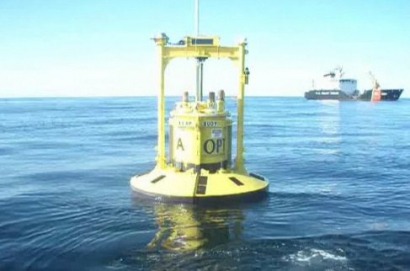
Deployed under the US Navy's Littoral Expeditionary Autonomous PowerBuoy (LEAP) program, the PowerBuoy was in the direct path of Hurricane Irene, which hit the New Jersey coastline on 27 August 2011.
The PowerBuoy emerged from the two-day storm undamaged and fully operational, with all the buoy's systems having withstood wave heights of up to 15 meters (nearly 50 feet).
During the storm, the PowerBuoy continued to supply consistent power to its communications and radar payload, and dissipate the high amounts of surplus energy it produced. In addition, nearly constant communication was maintained with the device throughout the storm, allowing continuous on-land monitoring of the buoy's status and performance.
The PowerBuoy operated on a fully autonomous basis, implementing the requisite power management and system protection functions without the need for any human intervention.
"We are pleased to report the outstanding performance of our PowerBuoy off the coast of New Jersey during Hurricane Irene's onslaught,” said Charles F. Dunleavy, Chief Executive Officer of OPT.
“Despite encountering significant wave heights, the buoy continued to produce power and operated exactly as designed for extreme sea conditions.” he continued. “On Monday morning, after the storm passed, our PowerBuoy was right on station where it had originally been deployed and was operating to the Navy's specifications as it did prior to the storm.”
The PowerBuoy, which was deployed on 11 August 2011, continues to undergo sea trials approximately 20 miles off the coast of New Jersey under a US Navy program for coastal security and maritime surveillance.
For additional information:

